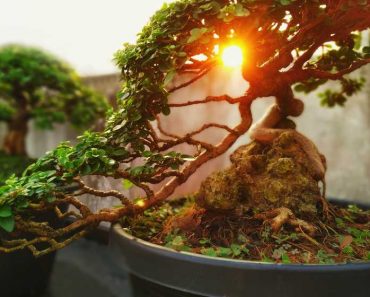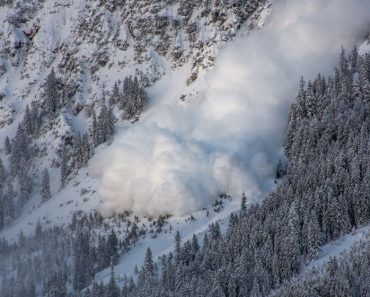The push for renewable electricity is taking us on some crazy turns. One of those has been the wildfires in California. Money that should be being used for transmission line maintenance and forest management to prevent contact between power lines and forest growth is instead being spent on more wind and solar farms. The same can be said for money that should be going into maintaining our nation’s existing power plants.
We’re now being told that wind and solar power is cheaper to produce than coal, natural gas and nuclear power. The term they’re using to justify that is the “levelized cost of energy production.” This, like many terms today, is a deceptive look at “lifetime production costs.” Since subsidies paid for building those solar and wind farms aren’t a cost, allowing energy producers to build them for virtually nothing, it drastically reduces the cost of building those facilities… at least for the energy companies anyway. As for you and I, the money to fund those subsidies is added to our electric bill, under an ambiguous name that looks like just one more “processing charge” for our electric power.
But even with all that they’re charging us, we are being told that we can expect an increase in rolling blackouts this summer, especially if the high summer heat continues. California has already instituted rolling blackouts and so has Texas; but it now looks like it might spread to other parts of the country.
This Device Easily Turns Air Into Water!
To be clear about this, the only reason why rolling blackouts might be needed is because of the increased amount of wind and solar power being used. As we all know, these sources are unreliable, unlike coal, natural gas and other more traditional forms of energy production. At the same time though, one of the traditional sources of electrical production, hydroelectric, is in trouble, because of the large number of reservoirs with low water levels due to drought.
With less energy production capacity, there is less reserve capacity to cover high usage hours. Those high use hours are when everyone is running their air conditioner. So, if there’s any time when rolling blackouts are likely to be instituted, it’s during those hours when people need their air conditioning the most. The question for us is: What do you do then? This may not sound like your typical survival situation; but if you live anywhere in the South or especially the Southwest, it can easily become one.
Go Underground
One of the best ways to cool off is to go underground. Ideally, that means going into a cave. The underground temperature, year-round, is 75°F, at 10 feet below the surface. That’s right in the middle of what is considered “comfort range” for home interiors. Unfortunately, few of us have caves available on our property that we can use just for this purpose.
Many of us do have basements though; which can serve almost as well. While a basement isn’t quite 10 feet deep, it is still underground and will receive the cool ground temperature radiating through the walls and floor. Since heat rises, you really don’t need to worry about the ambient temperature outside working its way down into your basement, assuming there aren’t any open doors or windows for the wind to blow that hot air in through.
The one problem with basements is that they can’t be built in all areas, due to high water tables. This makes it impossible to build homes with basements, because the groundwater will seep into the basement, flooding it. If you live in an area where none of the homes have basements, chances are pretty high that the water table is too high to make them practical.
But if you’re fortunate enough to have an unfinished basement in your home, you might want to consider building a family room, den or office down there; someplace you can use for your normal activities, without having to be upstairs in the summer heat. This could also serve to lower your electric bill, as you won’t need the air conditioning on all the time upstairs.
Use Shade
The heat we experience on the surface of the Earth comes from sunlight. That sunlight strikes the surface of the earth, rocks, buildings and anything else in its path. The darker colors absorb it, converting it to heat. That’s the heat that we feel in the air around us. How much heat we feel varies by how much sunlight is hitting the earth near where we are. During the summer months, we are closer to the sun, receiving more direct sunlight, because of the axial tilt of the earth. Cloud cover reduces the summer heat; but we don’t always have that cloud cover to count on.
Cloud cover isn’t the only thing that can reduce the amount of sunlight hitting the earth where we are though; anything that provides shade will work, like trees. Back before air conditioning, people who could would try to build their homes in the shade of large trees, so that there wouldn’t be as much sunlight hitting their homes. That alone can make as much as ten degrees difference in the temperature inside our homes.
It might take a little creativity to come up with the necessary shade, if you don’t live where there are large trees. At one time I lived in a motorhome, because I did a lot of traveling. I built a tent roof over a PVC pipe frame, that I could mount over the motorhome’s roof, providing shade.
Another way to get shade for the walls of your home is to use vines. They usually don’t take as long to grow as trees do, so vines will provide you with shade much more quickly. But to provide the shade you need, the vines need to be at least a couple of inches away from your home’s walls. To accomplish that, make a trellis out of heavy fishing line, attached to the eaves of your home and something anchored to the ground. A pressure-treated 2”X 4” will work for this, anchored with stakes and with eye bolts for the fishing line to attach to.
Evaporative Cooling
An alternative to normal air conditioning is evaporative cooling. These devices are sometimes referred to by the monicker “swamp coolers.” They use much less electricity than a normal air conditioner and as a bonus for those who live in areas with extremely dry air, they humidify the air at the same time. However, they only work effectively in areas that have dry air and they still require electricity, even though they don’t require as much.
That’s not to say that we can’t use evaporative cooling, even if we don’t have electricity. Placing a wet cloth over an open window or doorway will allow the air coming in to cause the water to evaporate, cooling the air in the process.
Another way to use evaporative cooling to your benefit is to wet your clothes down with water and allow that water to evaporate. In order to evaporate, each gram of water must absorb 540 cal of heat energy. While it might absorb some of that from the air, it will absorb most from your body, cooling you in the process.
Wind
Wind doesn’t actually cool, regardless of what anyone says. However, it can provide the sensation of cooling by moving the heated air from around our bodies and replacing it with air that hasn’t absorbed the heat that we are radiating. It can also help to aid the evaporation process. So, if you’re using evaporation for cooling, either by hanging a wet cloth over a doorway or by wearing wet clothing, it will work even more effectively when there is wind.
Making Wind More Effective
Wind can be made even more effective, if we can force it to go through an orifice. This is essentially the way that an air conditioner works, but without the expensive equipment and high energy costs.
When a gas expands rapidly the molecules slow down, cooling it. This effect is called the Joule Thompson effect and it is what makes air conditioning possible. It is highly effective in air conditioners, because of the compressor raising the freon to a high pressure, forcing it through an orifice. As the freon comes out the other side of the orifice, it expands rapidly, causing it to drop in temperature rapidly as well. That cold freon then runs through an evaporator, which functions as a heat exchanger, collecting heat from the air passing over it and essentially cooling that air.
People in some parts of Africa have discovered that they can accomplish something similar, although not as effective, with normal air, utilizing wind to move the air. They do this by using discarded soda bottles and cardboard.
To make this cooling device, cut a piece of heavy corrugated cardboard to fit in a window. Then collect enough 2 or 3 liter bottles to cover the cardboard, standing up. Cut off the bottles right at the shoulder, where they start tapering down to the opening. Discard the cup part of the bottle, saving the funnel shaped part and the screw-on top.
Using the bottles themselves as templates, draw circles on the cardboard, placing the bottle funnels as close together as possible, without them touching. Cut these circles out carefully and glue the bottle funnels into the openings with a hot-melt glue gun. Be sure to install the funnels so that they all face the same way. Additional hot melt glue between the funnels, gluing them together, will add additional stability and strength.
Take the bottle caps and drill a hole in them, somewhere between 1/4” and 3/8” in diameter. Then attach the bottle caps back onto the bottles. The finished cooler can be installed in the window, with the funnels on the inside and the larger openings of those funnels facing outdoors.
As the wind pushes air through the funnels, it will cause the air to expand rapidly, once it comes through the holes in the bottle caps. This will cause the air to cool, somewhere between five and ten degrees. While not as good as air conditioning, this will definitely be a help. If the air coming through the device has come from a shady area, where it will already be cooler than the rest of the ambient air, the cooling effect will be even more pronounced.



























